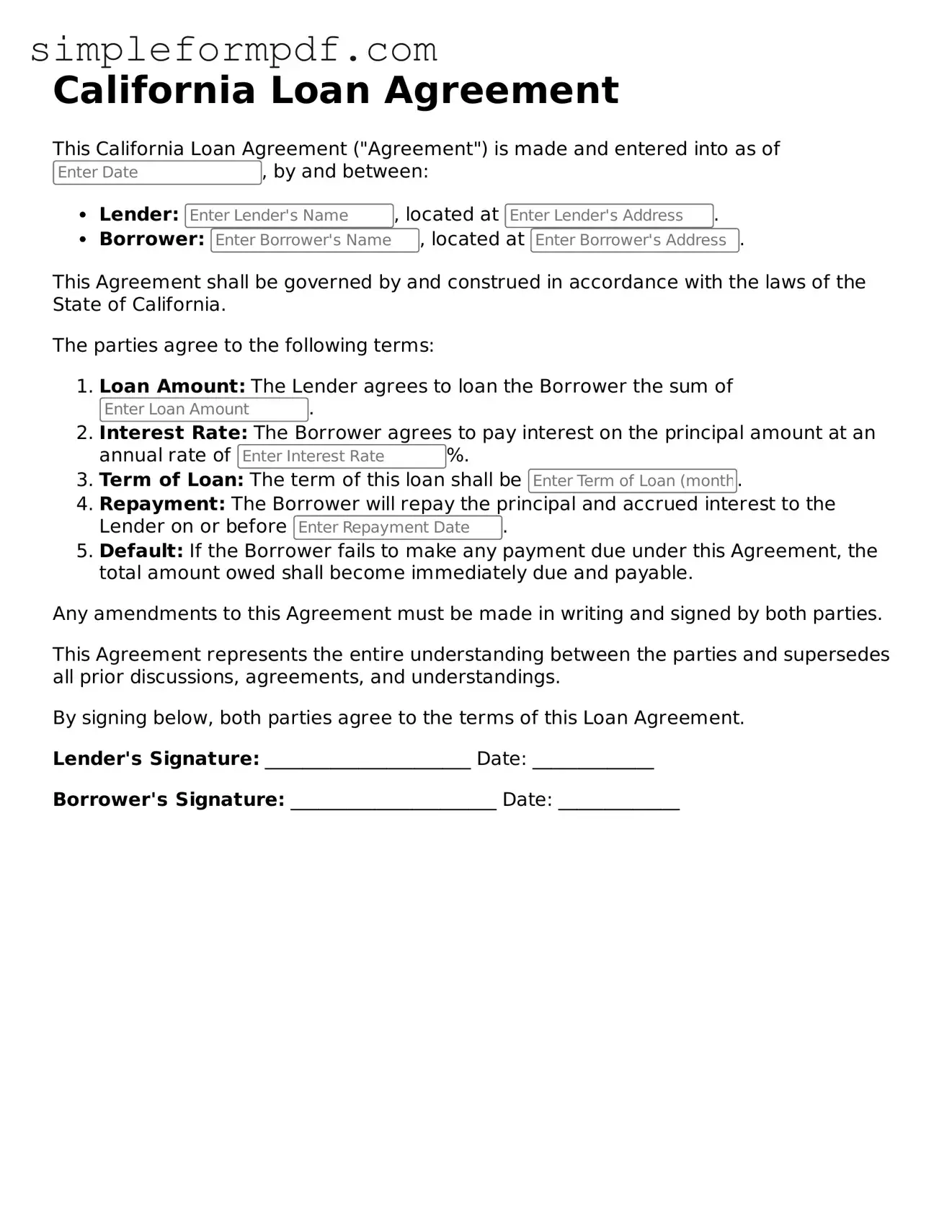Free Loan Agreement Form for the State of California
The California Loan Agreement form is a legal document that outlines the terms and conditions of a loan between a lender and a borrower. This form helps ensure that both parties understand their rights and obligations, providing clarity and protection throughout the loan process. If you are ready to fill out the form, click the button below.
Launch Editor
